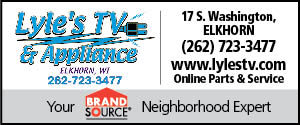By Dave Fidlin
Correspondent
Whitewater’s extensive zoning rewrite project was formally adopted a little more than a year ago. But the process of making additional tweaks to the vast collection of ordinances continues — a fact represented during a recent spirited discussion about changes to the municipal code.
The Common Council agenda on Sept. 1 included a read-through of 48 sections of the city’s zoning code that were subject to amendment. Many of the changes were related to wordsmithing and other minor alterations.
But the council in its most recent review got hung up on one particular item: what parameters should be placed around the technicalities of impervious surface limitations within a specific property.
Amid the broader zoning-related discussion, Chris Munz-Pritchard, neighborhood services director and city planner, was directed recently by the council to investigate how comparable communities address impervious surface issues.
With Munz-Prichard’s recent report in hand, the council deliberated at length about impervious surface calculations in relation to a property’s overall lot size. In the end, officials decided to form a subcommittee to dig into the issue even further.
One core issue amid the current debate is whether a one-size-fits-all approach for impervious surface calculations for Whitewater, which has different lot sizes in different portions of the community.
While the city already has impervious surface limitations in place for properties, the numbers vary. The lot surfaces for residential properties cannot exceed 30 percent, while commercial and industrial sites have a 40-percent threshold.
The subcommittee, which will eventually make recommendations to the full council, will include Munz-Prichard, City Manager Cameron Clapper and councilpersons Stephanie Abbott, Chris Grady and Ken Kidd.
The group’s findings are due back by the end of the year.


